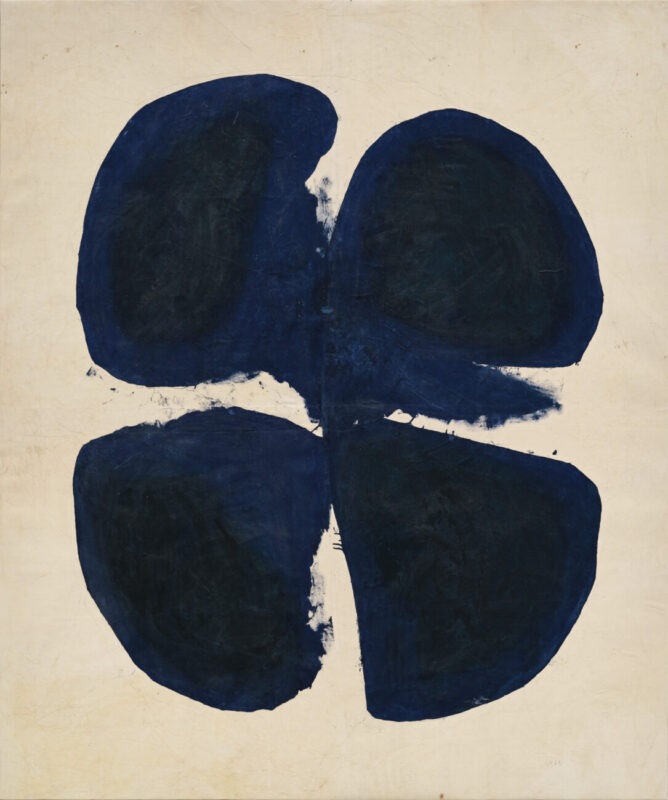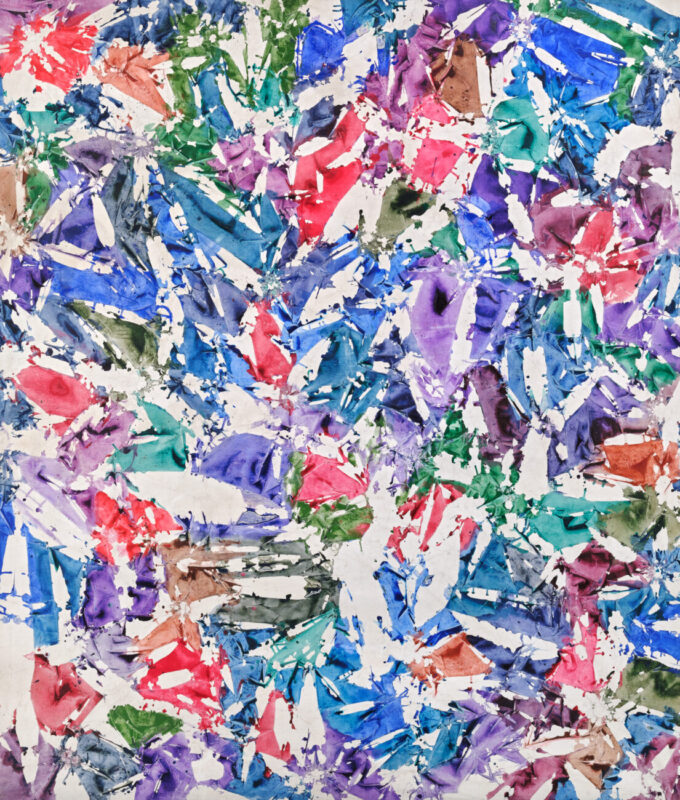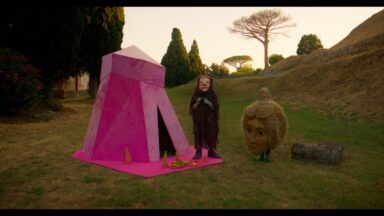The new exhibition by Simon Hantaï at Gagosian Rome
Gagosian Rome is pleased to announce “Azure,” an exhibition featuring paintings by Simon Hantaï (1922–2008). Curated by Anne Baldassari, the showcase delves into Hantaï’s connection with Italy and the impact of the Italian pictorial tradition on his work, highlighting the recurrence of blue tones in the artist’s practice. Following the significant retrospective at the Fondation Louis Vuitton in Paris (2022), “Azure” follows two previous exhibitions hosted by Gagosian: “LE NOIR DU BLANC, LE BLANC DU NOIR” held at Le Bourget (2019–22), dedicated to black and white works; and “Les blancs de la couleur, la couleur du blanc,” focused on the combination of primary and secondary colors, held at the Madison Avenue location in New York (2022).
Born in Bia, Hungary, Hantaï moved to Paris in 1948, joining André Breton’s Surrealist group, from which he distanced himself in 1955. In the subsequent years, the artist developed the pliage (folding) technique, where the canvas is folded, knotted, painted in visible portions, and then unfolded, revealing an alternation between the background and pigmented parts. After representing France at the Venice Biennale in 1982, Hantaï withdrew from public life, refusing to exhibit new works until 1998. Following this extended isolation, the artist began to intervene with a series of pliage works exhibited in 1981, photographing them diagonally and creating prints from distorted images. He continued to work largely in isolation until his death in 2008.
It is significant that “Azure” takes place in Rome, as Hantaï first visited Italy in 1942 with fellow students from the Budapest Academy of Fine Arts, staying in Rome, Florence, and Siena. In 1948, during a walking trip from Ravenna to Rome, he visited the 24th Venice Biennale, encountering the works of Max Ernst and Jackson Pollock. He returned to Italy for the last time in 1982. These journeys contributed to solidifying his admiration for Italian painters of the proto and early Renaissance, particularly Giotto and Masaccio.

“Azure” is a retrospective that uses color as a criterion, presenting extraordinary examples of Hantaï’s well-known pliage works in chronological order. The exhibition opens with the canvas “Peinture (Petit Nu)” (1949), from the artist’s early production, where a figure stands out against an intense turquoise background reminiscent of Renaissance frescoes. This is followed by “Catamurons” (1964), folded in the center with multiple layers of color; “Meun” (1967), incorporating unpainted sections in the corners; “Étude” (1969), where the uniformly folded canvas painted in monochromatic blue is juxtaposed with large irregular white fragments; and “Blancs” (1974), where colorless segments dominate over fragments of blue, green, and black on the canvas.
In the gallery’s large oval room, a set of blue paintings from the “Tabula” series (1972–76; 1980–82) stands out, constituting the focal point of the exhibition. The monumental scale of these works reveals each square as the result of a unique and autonomous folding. The paintings also connect to the artist’s childhood memories, fascinated by his mother’s aprons, whose entanglement and folding gave rise to sequences of bright colors. Prioritizing touch over vision, Hantaï infused the works in the “Tabula” series with references to historical artists, including Matisse and Cézanne, and paid homage to mathematical thinking by merging rigor and chance. In the last room, the “last studio” works (1982–85), rarely exhibited, present new forms derived from folding and dripping, executed with vibrant and balanced colors.
Another source of inspiration for the artist is Pablo Picasso’s “Blue Period” (1901–04). “For Hantaï,” writes Baldassari, “the same pictorial spirituality links the Blue Period to altar panels and frescoes by Giotto, Masaccio, Piero della Francesca, and Fra Angelico. Color was the common ground.” Hantaï is also fascinated by the centrality of the color blue in the Marian Catholic cult, as evidenced by the painting “Le Manteau de la Vierge” (1960) preserved at the Vatican Museums. “Since 1960,” Baldassari recounts, “having conceptualized pliage as a method, the semantic association between his mother’s apron, the color blue, and folding became a cornerstone of Hantaï’s painting, the focal point of his artistic practice.”



